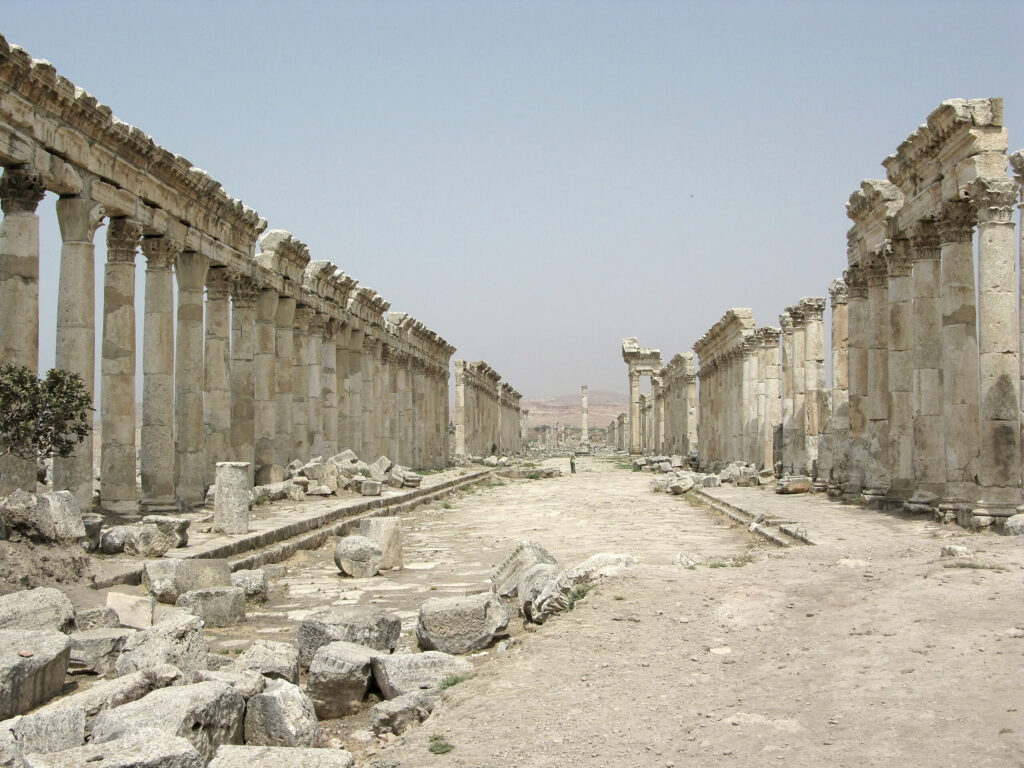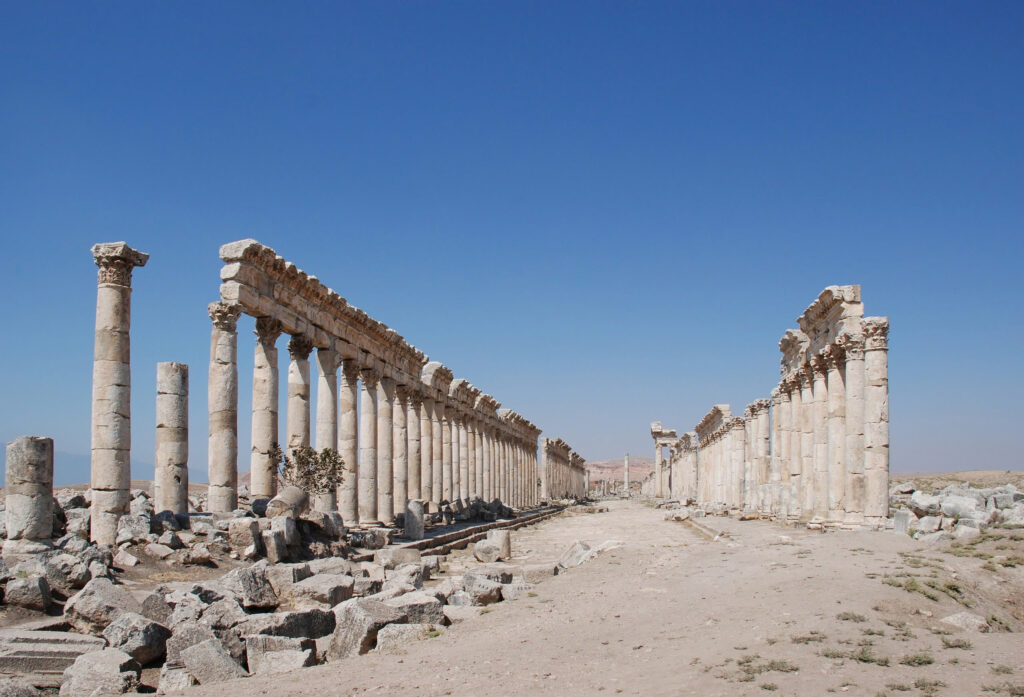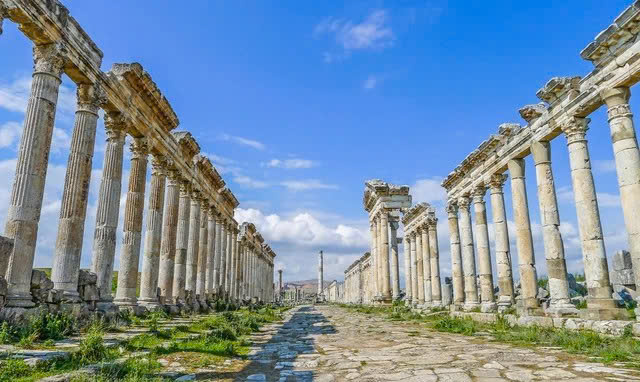Introduction
Imagine walking down a street where history meets grandeur: welcome to the Great Colonnade of Apamea. Built during the height of the Seleucid Empire and later enhanced under Roman rule, this 2-kilometer-long colonnade is one of the most iconic architectural marvels of the ancient world. With towering columns standing 9 meters (30 feet) tall, intricate spiral carvings, and a street wider than most modern avenues, it served as the heart of Apamea, a thriving city in Syria

Despite enduring earthquakes, wars, and time’s relentless march, the Great Colonnade remains a symbol of ingenuity and resilience, offering visitors a glimpse into the architectural and cultural achievements of the Seleucid and Roman eras.
The Rise of Apamea
300 BCE: The Foundation of Apamea
Apamea was founded around 300 BCE by Seleucus I Nicator, one of Alexander the Great’s generals and the founder of the Seleucid Empire. Strategically located near the Orontes River in modern-day Syria, the city quickly became a center of trade, military might, and cultural influence.
Named after Seleucus’s wife, Apama, the city was designed with an ambitious urban plan that included wide streets, grand public spaces, and monumental architecture. The Great Colonnade was one of its most significant features, showcasing the wealth and ambition of the Seleucid rulers.
The Construction of the Great Colonnade
115 CE: Rebuilding After the Earthquake
The Great Colonnade was initially constructed during the Seleucid period, but it underwent significant reconstruction after a devastating earthquake struck the region in 115 CE. Under Roman rule, the people of Apamea didn’t just rebuild—they transformed the colonnade into a structure more spectacular than ever before.
Architectural Grandeur

The colonnade stretched for 2 kilometers (1.2 miles), making it one of the longest colonnaded streets in the ancient world. Key features included:
- Monumental Columns: Each column stood 9 meters tall and 1 meter in diameter, with bases so precisely squared that they supported the massive weight for nearly two millennia.
- Spiral Fluting: Many columns were adorned with intricate spiral carvings, a rare and highly sophisticated decorative element.
- Wide Avenue: The street itself was broad enough to accommodate bustling markets, processions, and travelers, serving as the city’s main thoroughfare.
This wasn’t just a road—it was a statement of power and prosperity, designed to impress anyone who entered the city.
The Role of the Great Colonnade
A Center of Commerce and Public Life
The Great Colonnade was more than a street—it was the lifeblood of Apamea:
- Economic Hub: Shops, markets, and workshops lined the avenue, making it a center for trade and commerce.
- Public Gatherings: Festivals, religious ceremonies, and civic events were held along the colonnade, bringing the community together.
- Symbol of Prestige: The grandeur of the colonnade reflected the city’s wealth and ambition, rivaling other great Roman cities like Ephesus and Palmyra.
A Testament to Resilience
The earthquake of 115 CE could have marked the end of Apamea, but instead, it became an opportunity to rebuild and elevate the city. The reconstruction of the colonnade symbolized the resilience and determination of its inhabitants, as well as the influence of Roman architectural techniques.
Apamea Through the Ages
7th Century CE: Decline and Invasions

Apamea thrived for centuries but began to decline in the 7th century CE due to invasions and shifting trade routes. The city suffered under Byzantine rule and later during the Arab conquest, which marked the end of its prominence as a cultural and economic hub.
Modern Rediscovery
During the 19th and 20th centuries, archaeologists uncovered the ruins of Apamea, including the Great Colonnade. These excavations revealed the scale and sophistication of the ancient city, sparking renewed interest in its history and architecture.
Video
The Legacy of the Great Colonnade
The Great Colonnade of Apamea remains a symbol of human ingenuity and ambition. Its towering columns, intricate carvings, and sheer scale continue to awe visitors and historians alike.
Why It Matters Today

- Architectural Achievement: The colonnade demonstrates the advanced engineering and artistic capabilities of the ancient world.
- Cultural Significance: It provides insight into the societal values, economic systems, and resilience of Apamea’s people.
- Historical Legacy: The ruins of the colonnade connect us to a time when architecture was not just functional but a statement of identity and power.
Conclusion

The Great Colonnade of Apamea is more than an ancient street—it is a masterpiece of urban design, a testament to resilience, and a monument to the ambition of a great city. From its foundation in 300 BCE to its reconstruction in the 2nd century CE, the colonnade served as the heart of Apamea, embodying the city’s wealth, power, and cultural sophistication.
Though time has taken its toll, the remnants of this magnificent street remain a source of inspiration, reminding us of the enduring legacy of ancient civilizations and their ability to create beauty and grandeur that transcend the ages.

